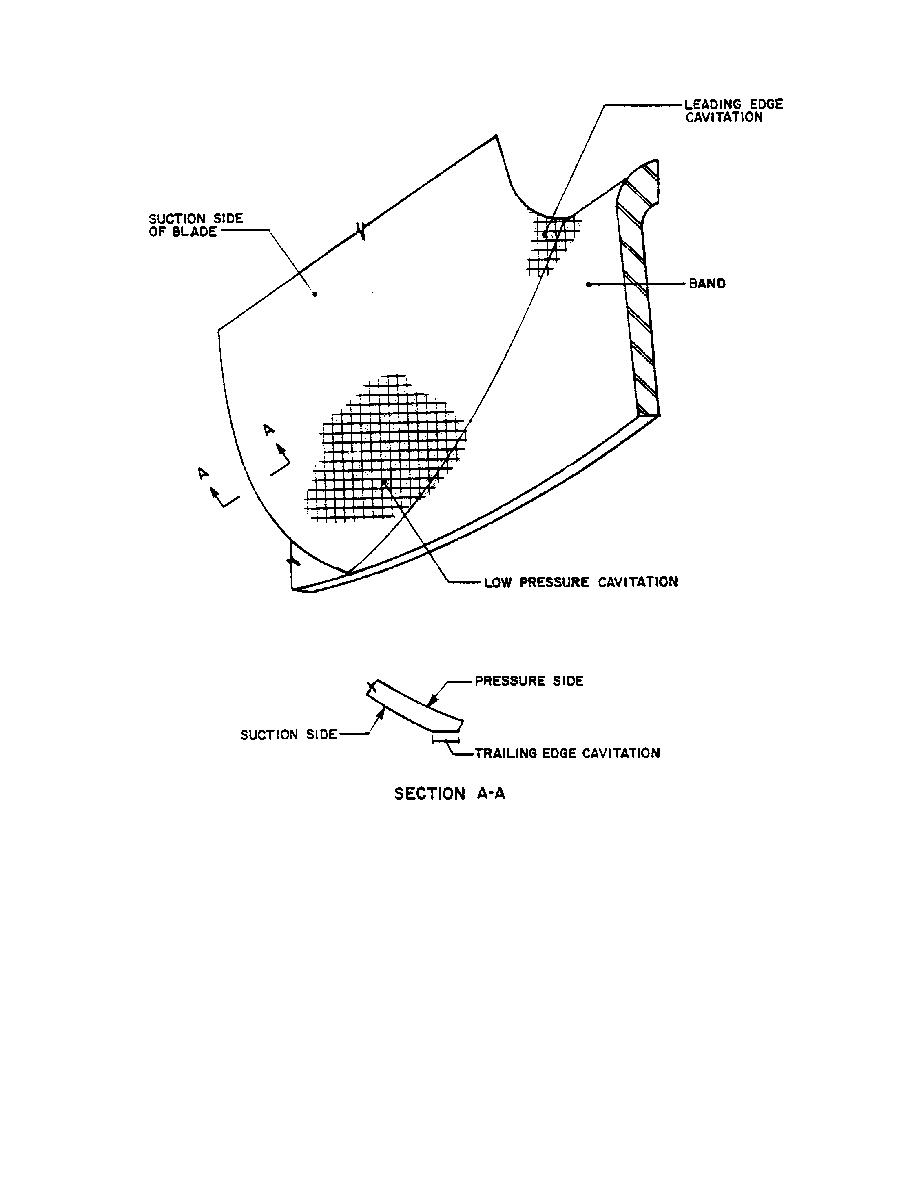

Input from the turbine manufacturer is invaluable in making runner
modifications. Except for small adjustments, the changes may
influence the performance of the machine. This is especially true for
pump-turbines where blade modifications at the turbine welding edge
will effect pump discharge and pump welding edge modifications will
influence turbine performance.
modifications. Except for small adjustments, the changes may
influence the performance of the machine. This is especially true for
pump-turbines where blade modifications at the turbine welding edge
will effect pump discharge and pump welding edge modifications will
influence turbine performance.
Modifications to the blade welding edge to reduce cavitation on the one side will
likely make the opposite side of the blade more susceptible to cavitation
damage; therefore, changes must be made carefully.
likely make the opposite side of the blade more susceptible to cavitation
damage; therefore, changes must be made carefully.
4.6 "REPAIR METHODS
"Weld Repair
"General. Welding is the most common and, to date, the most successful
method of repairing cavitation damage on hydraulic turbines. The various steps
for repair by welding are as follows:
method of repairing cavitation damage on hydraulic turbines. The various steps
for repair by welding are as follows:
Initial dimensional checks
Application of braces of strongbacks Surface preparation
Preheat
Weld application
Grinding to contour
Weld inspection
Removal of braces and strongbacks Final dimensional checks
Application of braces of strongbacks Surface preparation
Preheat
Weld application
Grinding to contour
Weld inspection
Removal of braces and strongbacks Final dimensional checks
"In addition, prior to the start of weld repairs, the following must be established:
Composition of base material
Weld material
Weld process
Weld material
Weld process
Repair procedure
"Safety Considerations. As
with other types of maintenance work, safety
considerations must not be overlooked. The maintenance platform under the
runner must be adequately designed for the equipment and personnel Loads to
be handled during the repair program. Ventilation during welding is important.
Wicket gates and spiral/semi-spiral case mandoors should be open and exhaust
fans should be available for removal of smoke and fumes. Proper and adequate
runner must be adequately designed for the equipment and personnel Loads to
be handled during the repair program. Ventilation during welding is important.
Wicket gates and spiral/semi-spiral case mandoors should be open and exhaust
fans should be available for removal of smoke and fumes. Proper and adequate
13